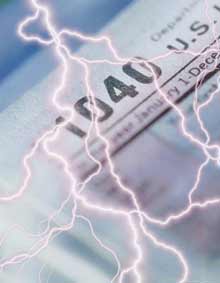

Market pricing for real estate cash flows
Banks and other financial institutions purchase cash flows on a regular basis. These payment streams are often purchased without a discount. Aside from a change of recipient address for their monthly payments, the transfer is completely seamless to the payer.
These payment streams are usually purchased from institutions with similar lending parameters. This means that the buyers are familiar with the credit rating and demographic of the payer, as well as the structure and critical metrics of the mortgage. If the buyer of the loan is comfortable with the risk, then no discount is needed.
Imagine this situation, though: if the buyers were purchasing sub-prime mortgages, they wouldn't be as comfortable with taking on the note because it represents a possibility for higher risk. Logically, any offers to pay off a note holder upfront in exchange for the right to collect future payments will typically be "discounted," meaning the purchase price will be somewhat lower than the current note balance.
The discount is necessary in order to counterbalance the risks . limited equity, a payer with low or no credit score, possible foreclosure, or having to foot the bill for legal actions and then sell the property via auction.
Why the discount?
A discounted purchase price does two things: it limits the amount of capital the buyer has tied up in that mortgage, and it reduces the amount of money the seller receives for their cash flow.
If a mortgage buyer has purchased a mortgage at a discounted price, then the overall risk is lower, because there's less to lose in a bad foreclosure situation. Logically, the riskier the mortgage, the deeper the discount required to get potential buyers interested.
Ideally, the buyer of a secured note should be able to foreclose on the property and re-sell the house to recoup the entire initial capital amount. But, there are substantial expenses involved with foreclosure to take into account. The discount should make up for these extra costs, but it will not compensate the buyer for the hassles associated with the foreclosure situation.
As a result, many buyers will require an even deeper discount if they feel that a foreclosure situation is likely. The price must be low enough in order for the deal to be worthwhile for the buyer to get involved with the deal in the first place.
The note buyer market
The majority of seller-financed mortgages are sub prime loans; as such, they are considered by banking standards to be high risk. As a result, many lending institutions will not be interested in purchasing these private payment streams.
The good news is that there are plenty of other buyers who are interested in purchasing the monthly payments at a discount in order to take advantage of earning a yield percentage that is unavailable elsewhere - 20%, 30%, or sometimes even greater. These risk-tolerant buyers are comfortable with the foreclosure process when it becomes necessary, and know that seller-financed notes represent an unparalleled wealth building opportunity.
In order to achieve a yield commensurate with the risk involved, these savvy buyers will often offer less than the remaining balance on the note when purchasing these privately-held mortgages. As mentioned earlier, the discount increases the overall attractiveness of the note to the buyer.
There are exceptions, though - in some cases, prime notes with great equity, attractive security property, and an interest rate substantially higher than the market average will bring a high price.
Note buyers' priorities
Typically, buyers consider their risks in three general ways.
#1. Time-Value of Money. The note buyer's primary concern comes from the principle regarding the time-value of money - the factor that determines the amount of time it will take to get their initial purchase cost back. Longer terms usually have lower payment amounts, and it takes longer for the buyer to get their funds.
#2. Equity. Second on the "risk list" is the property value and the amount of equity in the deal. A small amount of equity creates an insignificant safety net for buyers should the note go to foreclosure. So, many will offer lower prices to create artificial equity and a lower Investment to Value (ITV).
#3. Payer quality. Buyers will look at the payer and the potential for default. Does the payer evidence a good recent history for steady payments and a consistent job history, despite a poor credit rating? Even if the payer's financial performance is not stellar, it isn't necessarily a problem as long as there is plenty of equity to protect the note buyer's capital. But when there is no safety net, the buyer will need to discount a note heavily if the probability of payer default is perceived to be high.